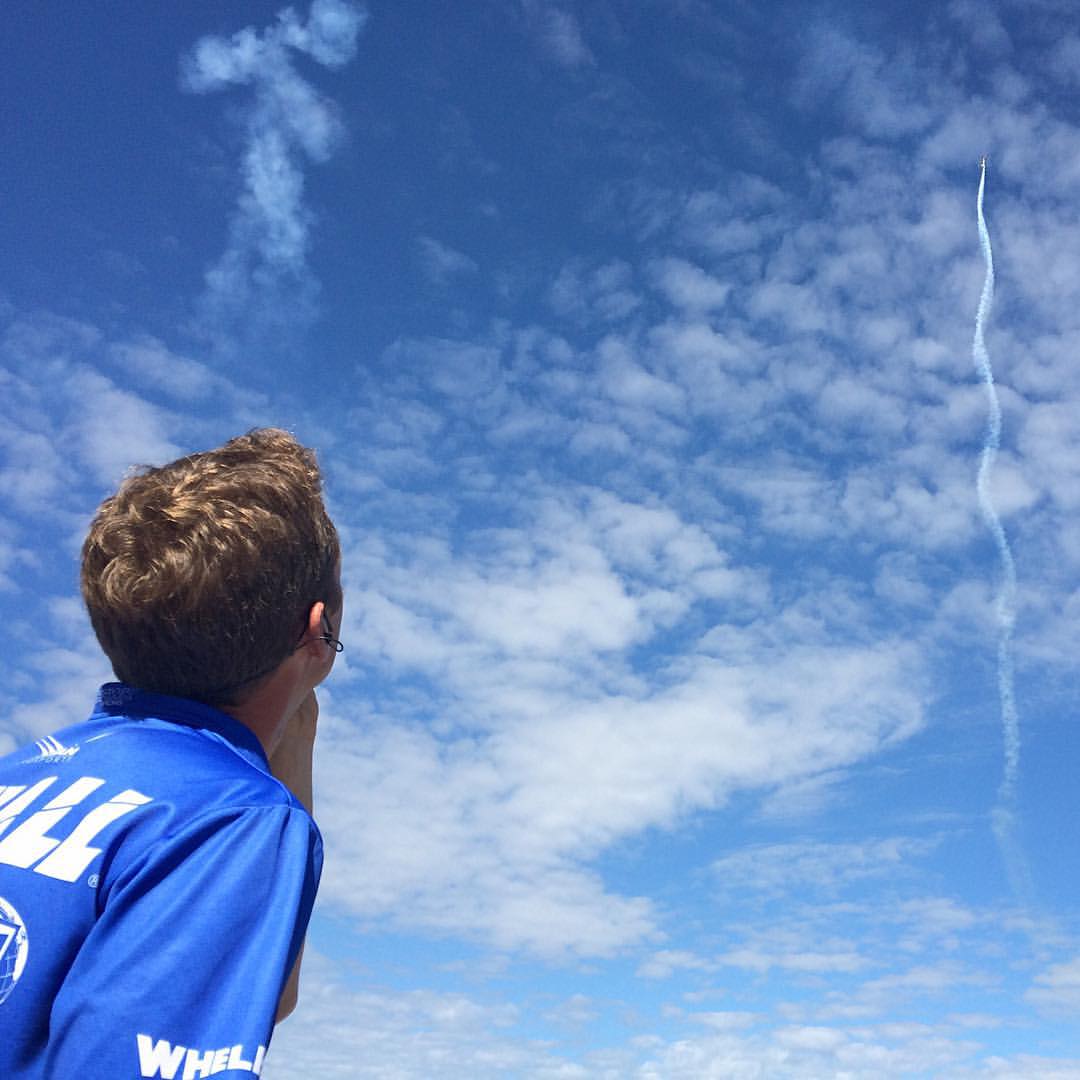Each year, we would gather around a computer and try to find new songs for Mike’s air show. It sounds like a fun time, but it was usually the most stressful, exhausting thing we would do in prep for the season. We always kept at it because we knew how important it was.
The music that plays during your air show is what transforms it from a demonstration into a performance. When done correctly, your air show music will manipulate the emotions of your audience and create moments that seer into their memory. Choose the wrong music and even the fanciest flying in the hottest airplane in the world won’t move their emotional needle.
Not convinced? The best air show scoring I’ve ever seen is done by the USAF Thunderbirds. At one point during their performance, after a barrage of hard hitting rock, electronic, and country songs, the audience hears the lone voice of Celine Dion singing “God Bless America” while the diamond pulls vertical before splitting off into a vertical bomb burst. A solo jet then climbs through their smoke trail in a spiraling climb towards the heavens. It is the single most inspiring moment flown by any jet team.
Now watch that same sequence with the volume turned off. Still cool, but it lacks emotion. When air show music is done well, you can transform your performances into journeys for the audience and you get to determine their emotional destinations. We can design a soundtrack to make them feel inspired, patriotic, energized, humored, or even reverent. Watch videos of the the USAF Heritage Flight, Mike Goulian, or Matt Younkin to see how the music adds to their performance. Tora Tora Tora creates an intense arena with their use of sirens and sound effects during their show.
It is all about creating moments. No person is going to remember all 12 minutes of your air show performance, but they might remember that one thing you did, that one moment you created for them.
Some important points to consider:
- Make it relatable: You should use music that your audience is familiar with. Using a song from that cool indie band with 350 Facebook followers, of which you are one, isn’t going to win you, or them over any new fans. Unfamiliar music is distracting at best and only goes to distance your performance from your audience. If at least some people say “I love that song” during your show, that is a good indication they are paying attention and connecting with you.
- It doesn’t have to be on 10 the whole time: There’s a saying in music that if you really want people to listen, play quietly. That works just as well with air show music. Too many performers spend their entire show flying to music that sounds like it is running on pure adrenaline the entire time. It is exhausting to your audience and doesn’t leave any room for emotional highs. You’ve got to have low, soft, quieter moments so that you can bring your audience up to the high, loud points. Make it a journey.
- Stop using AC/DC “Thunderstruck.” I’m only half joking. I know I said to make your music relatable and familiar but you can go overboard. How many times have you heard the same song two, or even three times on the same day from three different performers? Pay attention to what your air show peers are doing and try to avoid the cliches.
- Do some editing: Your air show is 8 minutes long, maybe 12 at the most. If you use one song that is 5 minutes long you just gave around 50% of your show to one song. The emotional hits need to happen faster than that. No one song should play for longer than 2 minutes. You need to find the music with the emotional moment you are looking for, and cut it down to an easily digestible 2 minute or less selection. Be careful though, a bad edit of a familiar song can ruin its effectiveness.
- Choose music that fits your style of flying: A Stearman diving into a loop while the audience hears “Fuel” by Metallica just doesn’t make sense. Similarly, a gyroscopic tumbling Extra flying to “Girl from Ipanema” would be just as dissonant. Find your aerial personality and line up songs that compliment the style of flying you offer.
A good performer creates and owns the entire environment they exist in and own the attention and emotions of their audience. Flying will not do that alone. If you are ignoring your music selections, or leaving it up to the show sound engineer (as great as they are), you are forfeiting the emotional potential of your performance.
Chris Porter is the owner of CAVU Digital Media and has a Bachelor of Science in Music from Northeastern University. He has over 1,500 hours of flying and has been involved with the air show industry since 2012. He may be reached at CP@CAVUDigitalMedia.com


Recent Comments